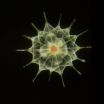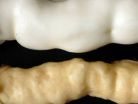An eye for an eye
2010-10-05
(Press-News.org) Revenge cuts both ways in the Israeli-Palestinian conflict. Scientists of the University of Zurich, the Massachusetts Institute of Technology, and Tel Aviv and Quinnipiaq Universities show that attacks by either side lead to violent retaliation from the other. Both Israelis and Palestinians may underestimate their own role in perpetuating the conflict.
A team of scientists from the University of Zurich, the Massachusetts Institute of Technology, and Tel Aviv and Quinnipiaq Universities have found that attacks by both Israel and Palestinians lead to violent retaliation from the other side. This finding challenges claims by both Israelis and Palestinians that they confronted with a fundamentally hostile and implacable foe, suggesting instead that part of the violence of each side is a direct reaction to previous attacks by the other party.
The team analyzed a large dataset of killings and rocket attacks in the Second Intifada between Israel and Palestine, spanning the years 2000-2008, using a statistical method called Vector Autoregression. "This technique allows us to study the effect of a single additional attack from one side on future attacks by the other side," says lead author Johannes Haushofer, a neurobiologist and economist at the University of Zurich. "We find that when one side attacks the other, they directly inflict a certain additional number of fatalities or rocket attacks on their own people, because they can be nearly certain that the other side will retaliate. For example, when Israeli forces kill 5 Palestinians, they automatically increase the probability that Israelis will die from Palestinian attacks on the following day by 50%."
The study, published in Proceedings of the National Academy of Sciences this week, overturns earlier findings which had suggested that only Palestinian attacks lead to retaliation, while Israeli attacks did not. "The previous evidence suggested that Israeli attacks were often responses to Palestinian aggression, whereas this did not appear to be true for Palestinian attacks," says Anat Biletzki, a professor of philosophy at Tel Aviv and Quinnipiaq Universities, and former head of BT'selem, an Israeli human rights organization that collects the data that were used in the study. "This implied that the conflict was one-sided, with Palestinians attacking Israel, and the Israeli army merely responding to this aggression. Our findings suggest that the situation is more balanced than that."
The scientists hope that this insight will lead to a better understanding of the forces that perpetuate the conflict. "Psychologists have long known that people tend to understand their own behavior in terms of the external situation they find themselves in, but another person's behavior in terms of that person's inherent character," says Nancy Kanwisher, a professor of neuroscience at the Massachusetts Institute of Technology and the senior author of the study. "This cognitive bias may exacerbate blind spots on both sides of the conflict and tend to think of themselves as victims who merely respond to external violence, without appreciating their own causal role in provoking those acts of violence."
INFORMATION: END
ELSE PRESS RELEASES FROM THIS DATE:
2010-10-05
DURHAM, N.C. – Most doctors are spending a good deal of time counseling their patients about diet and weight loss, but for the most part, it isn't making any difference, according to a new study appearing in the American Journal of Preventive Medicine.
Duke University Medical Center researchers recorded the conversations between 40 primary care physicians and 461 of their overweight or obese patients over an 18-month period. Investigators didn't tell them what they were listening for – only that they wanted to record the encounters to see how doctors talked about health. ...
2010-10-05
PROVIDENCE, RI -- New research from Rhode Island Hospital found that reduced levels of brain-derived neurotrophic factor (BDNF), a protein in the brain that encourages growth of neurons, may be a trait marker for individuals with psychogenic non-epileptic seizures (PNES) (seizures that are psychological in origin). The findings are published in the October 4, 2010, issue of Neurology, the medical journal of the American Academy of Neurology.
Past studies have shown decreased levels of BDNF in the serum of patients with psychiatric disorders such as major depressive disorder ...
2010-10-05
The system has been designed by scientists from this Madrid university for Núcleo CC, a company which develops surveillance systems for the maritime and aeronautic sectors. The first prototype will be used in the near future in Cape Verde (Africa). Two types of sensors have been deployed there: a set of radars and a series of AIS (Automatic Identification System), which allow ships to communicate their position and give other relevant data on their location and characteristics. These two types of sensors offer complementary data which can be fused in order to obtain better ...
2010-10-05
LONDON, UK—After a decade of joint work and scientific adventure, marine explorers from more than 80 countries, including six scientists from the Marine Biological Laboratory (MBL), today delivered the first global Census of Marine Life revealing what, where, and how much lives and hides in the world's oceans. In one of the largest scientific collaborations ever conducted, more than 2,700 scientists spent over 9,000 days at sea on more than 540 expeditions gathering the data.
As a result of these efforts the scientists discovered that there may be up to 1 billion kinds ...
2010-10-05
WASHINGTON — The system put in place by the Bayh-Dole Act of 1980 -- which gives universities significant control over intellectual property associated with the results of federally funded research at their institutions – has been more effective than the pre-1980 system in making research advances available to the public and spurring innovation, says a new report from the National Research Council. Nevertheless, the current system needs improvement, said the committee that wrote the report.
"The public investment in research universities has led to a great deal of new ...
2010-10-05
A new research study published in The FASEB Journal (http://www.fasebj.org) may change how sports injuries involving muscle tissue are treated, as well as how much patient monitoring is necessary when potent anti-inflammatory drugs are prescribed for a long time. That's because the study shows for the first time that inflammation actually helps to heal damaged muscle tissue, turning conventional wisdom on its head that inflammation must be largely controlled to encourage healing. These findings could lead to new therapies for acute muscle injuries caused by trauma, chemicals, ...
2010-10-05
Post-doctoral researchers see their role as being vital in technology transfer where scientific findings become useful to the local economy, but most have little interest in running their own business once their research fellowship ends. That's the surprising finding of a study published in the International Journal of Knowledge-Based Development.
Edmund Zolnik, a public policy specialist at the George Mason University, in Arlington, Virginia, has surveyed postdoctoral fellows in the US National Capital Region. He found that most saw technology transfer as an important ...
2010-10-05
A researcher from the Faculty of Medicine & Dentistry at the University of Alberta has discovered a mechanism underlying some forms of obesity and addictions which could lead to a treatment for both diseases.
When a hungry animal finds food in the wild, it is a rewarding stimulus for the animal and is recognized by the brain by the release of the chemical messenger dopamine. Because narcotics such as cocaine, heroin and amphetamines, and even tasty and highly-caloric foods also cause the release of dopamine and therefore make people feel rewarded, it's clear that dopamine ...
2010-10-05
The roots of cassava (Manihot esculenta) serve as the primary source of carbohydrates in the diets of people in many arid regions of the world, including more than 250 million people in sub-Saharan Africa. Unfortunately the roots of commercial cassava cultivars are quite low in micronutrients, and micronutrient deficiencies are widespread in these regions. In addition to programs designed to deliver vitamin supplements, there has been considerable effort aimed at biofortification; that is, increasing the amounts of available micronutrients in staple crops such as cassava. ...
2010-10-05
HACKENSACK, N.J. (October 4, 2010) — James C. Wittig, M.D. and colleagues will conduct a total of eight research presentations at the upcoming 96th Annual Clinical Congress of the American College of Surgeons and the 65th Annual Meeting of the American Society for Surgery of the Hand. Dr. Wittig, an orthopedic oncologist with extensive experience in performing limb-sparing surgeries, is Chief of the Division of Skin and Sarcoma Cancer of the John Theurer Cancer Center at Hackensack University Medical Center.
The presentations will focus on unique surgical techniques ...
LAST 30 PRESS RELEASES:
[Press-News.org] An eye for an eye



